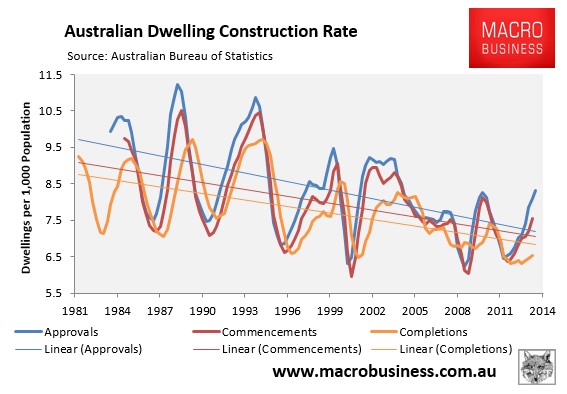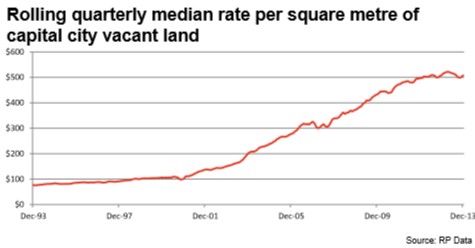
My buddies over at Prosper Australia have appeared before the Senate Inquiry into Housing Affordability and given the politico-housing complex a big serve. From The AFR:
[Prosper] called on the inquiry to “critically reconsider” any “simple” claims that high housing prices are the result of a housing shortage. “If we are faced with a genuine mismatch between supply and demand, rents would have risen dramatically,” its submission said.
“They have not, except for a short period between 2007 and 2010. A solitary focus upon supply and demand is a convenient distraction from the twin determinants of land market bubbles: liberal lending standards and non-taxation of land.”
The current tax regime – low property and land taxes and inefficient stamp duties – encourages land-owners to extract an economic rent from their property by capturing the uplift in land values, it said…
“Investors perceive rental income as secondary to expected rises in capital prices, while first home buyers over-leverage themselves to enter a bubble-inflated market.”
I obviously agree with Prosper that Australia’s peculiar tax laws makes investment into housing a relatively attractive proposition via a combination of high tax rates on savings, minimal taxes on land, as well as tax generous concessions like negative gearing and capital gains tax discounts. As a result, demand for housing in Australia is much higher than it otherwise would be, resulting in too much of the nation’s capital being tied-up in housing and inflated values.
However, I strongly disagree that supply-side factors – such as urban consolidation policies, cumbersome planning approval processes, and high taxes and charges on new homes – have not also played a major role in making Australian housing unaffordable.
These supply-side barriers have forced-up the cost of development, impeding the market’s ability to supply affordable housing and significantly dampening the supply response.
One only has to view the below chart showing a clear reduction in the rate of dwelling construction over the past two decades to see that housing supply has become increasingly unresponsive:

And this despite the biggest house price boom in the nation’s history which, under any normal market, would have generated a large construction response.
Alternatively, one could look at the 500%-plus surge in vacant lot prices over the past 20 years (see next chart) and wonder why fewer lots were produced in response to the rising prices?

It is government policy – on both the demand and supply-side – that is the primary cause of Australia’s housing malaise.

